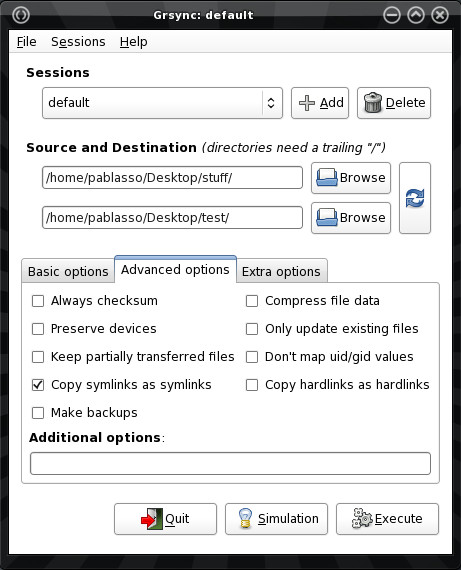
Installing the rsync daemon is really easy, since the package and its dependencies are available by default in the all the major Linux distributions repositories.
GRSYNC YUM INSTALL
On Archlinux, instead, we use pacman: $ sudo pacman -S rsync On Debian we can use the apt package manager: $ sudo apt-get install rsync On Debian and Archlinux, the files related to the rsync daemon are included the rsync package, so all we have to do, is to install the latter. On distributions like Fedora, instead, rsyncd, the rsync daemon, is distributed in its own package, rsync-daemon.

In recent versions of the distribution, to install it, we can use the dnf package manager. The main rsync package will be installed as a dependency: #Grsync yum redhat install#

Once rsyncd is installed, we can configure it using the /etc/nf file. Here is the content of the file on Fedora: # /etc/rsyncd: configuration file for The file is already included in the Archlinux and Fedora packages, while on Debian it must be created from scratch. # dont compress = *.gz *.tgz *.zip *.z *.Z *.rpm *.deb *.bz2Īll the parameters are commented, and displayed as a configuration example: they represent a good starting point for our discussion. Rsync can copy locally, to and from another host over any remote shell, or to and from a remote rsync daemon. The first thing we must notice is how an rsyncd module is defined: Ī module is defined in a “stanza” which begins with the declaration of the module name between square brackets, in this case. Rsync is a fast and powerful file copying tool. A module is associated with a directory in the filesystem, specified with the path argument. All the parameters provided inside the stanza are local, so they are applied to the related module only settings provided before any stanzas, are global. Let’s take a quick look at some of them.Īs we just said, global parameters are those defined at the beginning of the /etc/nf file, before any module definition, or optionally inside a section. Here we will discuss some of the most interesting ones.

This parameter is used to specify the path of a file where the rsyncd PID (Process ID) will be written.


 0 kommentar(er)
0 kommentar(er)
